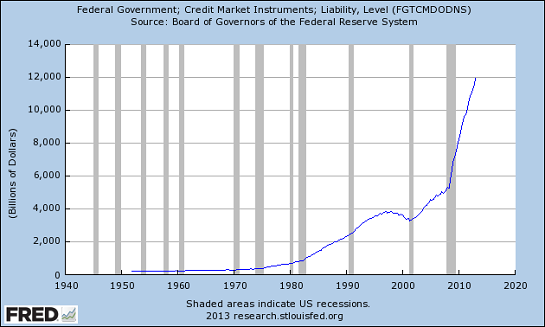First it was the Manufacturing ISM posting its first drop since September, and now it was the Services ISM’s turn to not only record its second miss to expectations (of 54.5) in a row, but drop from 53.9 to 53.0, for the lowest print since June. However, the most notable development in today’s release in addition to the slide in Inventories from 54.0 to 48.0 (impacting Q4 GDP) was the tumble in New Orders down from 56.4 to 49.4 – back to contraction territory: this was the first contraction in the New Orders index since July 2009 after 52 consecutive months of growth. Is it time to start worrying about the Untaper yet?
Is the spike in economic activity in Q3 now over:
The full breakdown:
From the report:
The report was issued today by Anthony Nieves, CPSM, C.P.M., CFPM, chair of the Institute for Supply Management™ Non-Manufacturing Business Survey Committee. “The NMI® registered 53 percent in December, 0.9 percentage point lower than November’s reading of 53.9 percent. This indicates continued growth at a slightly slower rate in the non-manufacturing sector. The Non-Manufacturing Business Activity Index decreased to 55.2 percent, which is 0.3 percentage point lower than the 55.5 percent reported in November, reflecting growth for the 53rd consecutive month, but at a slightly slower rate. The New Orders Index contracted after 52 consecutive months of growth for the first time since July 2009, when it registered 48 percent. The index decreased significantly by 7 percentage points to 49.4 percent, and the Employment Index increased 3.3 percentage points to 55.8 percent, indicating growth in employment for the 17th consecutive month and at a faster rate. The Prices Index increased 2.9 percentage points to 55.1 percent, indicating prices increased at a faster rate in December when compared to November. According to the NMI®, eight non-manufacturing industries reported growth in December. Despite the substantial decrease in the New Orders Index, respondents’ comments predominately reflect that business conditions are stable.”
These industries contracted in December:
The eight industries reporting contraction in December — listed in order — are: Mining; Arts, Entertainment & Recreation; Educational Services; Transportation & Warehousing; Real Estate, Rental & Leasing; Utilities; Wholesale Trade; and Accommodation & Food Services.
From the respondents:
- “Hiring activity seems to remain steady at mid- to senior-level management positions. However, it is uncertain what impact the Affordable Healthcare Act will have on hiring and full-time status in 2014 as more companies are re-evaluating their healthcare benefits strategies for all positions.” (Management of Companies & Support Services)
- “Business is steady. We are at year-end and the holidays, so it’s a little quiet. Expect things to pick up after the first [of the year].” (Construction)
- “Early, severe winter weather has had a major impact on business. Both customers and employees were unable to reach the workplace.” (Arts, Entertainment & Recreation)
- “Steady, with no significant shifts in demand or supply.” (Finance & Insurance)
- “Overall, we are still seeing the pickup in business which began in the 3rd quarter.” (Wholesale Trade)
- “General business conditions have improved.” (Information)
Finally, a look at commodity prices and availability:
Commodities Up in Price
- Airfares; Beef Items; Dairy; Diesel Fuel; Gasoline*; Milk; and Shrimp.
Commodities Down in Price
- Chicken; Computer & Peripherals (2); #1 Diesel Fuel (2); #2 Diesel Fuel (3); Fuel (3); Gasoline* (4); Soybean Oil; and Tires.
Commodities in Short Supply
- Shrimp is the only commodity reported in short supply.
So… buy shrimp?
![]()
via Zero Hedge http://feedproxy.google.com/~r/zerohedge/feed/~3/Xju2EdsNWiI/story01.htm Tyler Durden



















